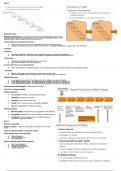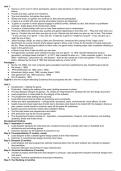Kishanravi196
On this page, you find all documents, package deals, and flashcards offered by seller kishanravi196.
- 3
- 0
- 0
Community
- Followers
- Following
3 items

Data structures and Algorithm Lecture Notes
Arrays - Describing the structure and usage of arrays in programming. Abstract Data Types (ADTs) - Explaining the theory behind ADTs and their applications. Lists - Discussing different types of lists, including singly linked lists. Queues and Stacks - Providing insights into these fundamental data structures and their operations. Trees - Covering different tree structures including binary search trees (BSTs) and balanced binary trees. Spanning Trees and Minimum Spanning Tree (MST) - Explai...
- Lecture notes
- • 14 pages •
Arrays - Describing the structure and usage of arrays in programming. Abstract Data Types (ADTs) - Explaining the theory behind ADTs and their applications. Lists - Discussing different types of lists, including singly linked lists. Queues and Stacks - Providing insights into these fundamental data structures and their operations. Trees - Covering different tree structures including binary search trees (BSTs) and balanced binary trees. Spanning Trees and Minimum Spanning Tree (MST) - Explai...

Software Engineering Lecture Notes
Unit 2: Software Development Methodologies Waterfall Model: Describes a linear and sequential approach to software development. Unified Software Development Process: An iterative approach consisting of four phases: inception, elaboration, construction, and transition. Unit 3: Software Modeling Diagrams: Discusses static models (class diagrams, package diagrams) and dynamic models (use case diagrams, sequence diagrams). UML Diagrams: Explains different types of UML diagrams and their purpose...
- Lecture notes
- • 12 pages •
Unit 2: Software Development Methodologies Waterfall Model: Describes a linear and sequential approach to software development. Unified Software Development Process: An iterative approach consisting of four phases: inception, elaboration, construction, and transition. Unit 3: Software Modeling Diagrams: Discusses static models (class diagrams, package diagrams) and dynamic models (use case diagrams, sequence diagrams). UML Diagrams: Explains different types of UML diagrams and their purpose...

Computer Games Design Lecture Notes
Unit 1: Basics of Game Design Definitions and Distinctions: Explains what games are, differentiating them from puzzles, toys, and stories. It includes quotes from notable figures like Katie Salen & Eric Zimmerman and Johan Huizinga. Historical Context: Describes the evolution of gaming consoles and significant milestones in computer game paradigms, such as RTS, FPS, adventures, god games, and TBS. Unit 2: Development and Production Roles and Responsibilities: Details the roles of lead design...
- Lecture notes
- • 23 pages •
Unit 1: Basics of Game Design Definitions and Distinctions: Explains what games are, differentiating them from puzzles, toys, and stories. It includes quotes from notable figures like Katie Salen & Eric Zimmerman and Johan Huizinga. Historical Context: Describes the evolution of gaming consoles and significant milestones in computer game paradigms, such as RTS, FPS, adventures, god games, and TBS. Unit 2: Development and Production Roles and Responsibilities: Details the roles of lead design...
